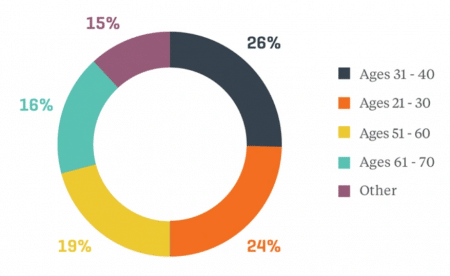Do-it-Yourself (DIY) is an increasingly popular option for consumers, with a projected growth rate by 2023 at 4%1. The DIY concept was already a hit before 2020, and because of the COVID-19 pandemic it is expected that online sales for DIY products will soar as consumers build, restore, bake and paint while stuck at home. However, reports suggest that this trend will continue even after the pandemic.
The NPD Group found that 40%2 of consumers indicated that they plan to continue doing DIY projects after the pandemic. It shows that DIY is not a passing trend; it’s a movement and it’s continuing to grow. Consumers that opt for DIY often take on more significant projects and find better materials to achieve their desired results without the hassle and expense of dealing with contractors. But who are these consumers, or DIYers as they are popularly called? And what can brands and retailers do to appeal to them?
DIY Consumers
DIY is ageless. That is, there is no clear-cut demographic for DIYers – if they have the resources and the inclination to start a DIY project, they will set out to do it at any time.
 Source: Venveo
Source: Venveo
Furthermore, for these consumers:
- Price is not a primary concern.
They are not afraid to spend more. In fact, a survey found that 67%3 specifically create a budget for each DIY project and stick to it, with the amount ranging from $2.5k - $10k of their annual budget. - Quality must be top of the line.
The same survey said that 71% agreed that quality is more important than price. They look for durability and reliability when choosing the right materials. They are not after cheap and short-term fixes. Instead, they look at what manufacturers use to represent quality. Integration with smart technology has also become an expectation for these consumers. - Inspiration is found online.
These consumers research information over the internet before stepping into physical stores to look and feel in person. - Product comparison is critical.
These DIYers fact-check everything before making the purchase decision. They thoroughly research a material’s price, reviews and if available support/help materials are easily accessible. - Brand loyalty is low priority.
DIYers tend not to be loyal to particular brand. Typically they are after the best product for their project, regardless of the brand or price. - Sustainability is essential.
These consumers are often environment advocates. They are willing to spend more for energy-efficient materials that are sourced sustainably.
What can brand and retailers do?
Enticing the DIY shopper to notice a brand online means catering to their specific wants and needs, no matter their age, goal, budget, etc. These tech-savvy band of shoppers are tenacious researchers – they know what they want, and they try to learn as much as they can about their options. Therefore, to differentiate, brands and retailers must:
- Create engaging, accurate, and channel-agnostic shopping experiences.
Since these consumers are information-hungry, brands and retailers must ensure that product information is always accurate, complete, consistent and relevant. The shopping experience must also be seamless on any platform they use, even in-store. Additionally, engaging shopping experiences promote brand credibility and trust, presenting a vast opportunity to reduce cart abandonment and customer retention. - Personalize experiences.
Brands and retailers should strive to use data to know their customers – their needs, preferences, etc. By understanding their needs, brands and retailers can craft offerings and stories that resonate with each customer’s goals. - Socialize with the shoppers.
DYI shoppers rely on online resources and feedback to help them make purchases for their projects. Creating post-purchase care through online help services, how-to videos and establishing communities for consumers to share feedback and experiences help bolster a brand’s or a retailer’s image.
The DIY consumer is here to stay, and they are always on the lookout for the best products that will boost their confidence about completing their projects. Therefore, brands and retailers should take particular notice and provide extraordinary experiences if they wish to effectively cater to these consumers.




